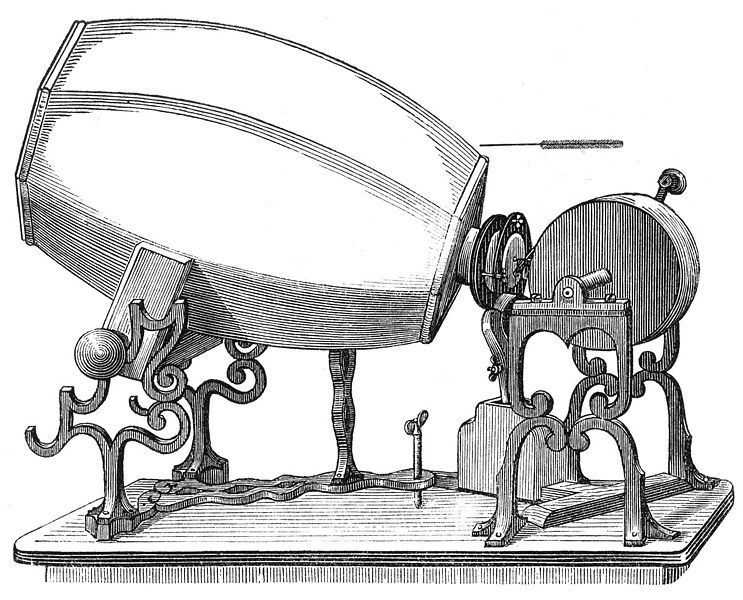Edison Voice Recording Is Old, but Not Oldest

The oldest playable recording of an American voice will make its second public debut today (Oct. 26), when a newly digitized version is played at a theater in Schenectady, N.Y. The first playback took place immediately after the recording was scratched onto a sheet of tinfoil, at a demonstration of Thomas Edison's freshly invented phonograph on June 22, 1878, in St. Louis.
But despite the fact that Edison was the first person to play an audio recording, he was not the first person to record audio. And depending on the chosen definition of "performance," the 1878 phonograph recording, which features a cornet solo and a recitation of "Mary Had a Little Lamb," is not the first-ever recording of a musical performance, as is being reported.
Édouard-Léon Scott de Martinville, a Parisian who made his living as a bookseller, is the first person who captured sound, and he's also the first person who recorded a musical recital, most likely his own.
In 1857, Scott patented the phonautograph, a device that, like the phonograph, funneled sound waves through a horn with a stylus on the end, translating them into traced lines on a turning cylinder. But at the time of his breakthrough, it didn't occur to Scott that sound recordings might be played back. His machine sought only to make a visual record of sound that could be studied at a later date. [Hear It: Rare Tinfoil Phonograph Recording from Thomas Edison Restored ]
As such, the phonautograph's stylus simply drew lines on a sheet of paper covered in soot from an oil lamp; it left no substantial physical record, like scratch marks in a sheet of foil. So when a man who is thought to be Scott crooned a 10-second lick of the French folksong "Au Clair de la Lune" into a phonautograph on April 9, 1860, he likely had no idea that nearly a century-and-a-half later the world would hear his singing voice.
In December 2007, an American audio historian rifled through the records of a Parisian patent office and found a few phonautograph recordings, or phonautograms, that were submitted by Scott as part of his original patent application. The historian also found clues that led him to another cache of phonautograms stored by the French Academy of Sciences.
Scientists at the Lawrence Berkeley National Laboratory were able to make digital maps of the recovered soot etchings, and when they played them back with a "virtual stylus" in 2008, Scott's 1860 rendition of "Au Clair de la Lune" became the earliest known recognizable recording of the human voice, and also the earliest musical recording.
Sign up for the Live Science daily newsletter now
Get the world’s most fascinating discoveries delivered straight to your inbox.
Scott dated his first phonautograms to three years before his patent in 1857, meaning the earliest audio recordings were made in 1853 or 1854. But because Scott hadn't yet taken up the practice of chiming a tuning fork in the background of his recordings, tagging them with a stable signal that could be used by modern engineers to surmise the true speed of the original recording, the contents of his earliest experiments remain indecipherable squawks.
The earliest recognizable recording of any sound is an 1859 Scott recording of a tuning fork vibrating at 435 Hertz. But the earliest indirect recording of any sound ever is probably to be found in the very structure of our universe, which betrays the effects of propagating sound waves present just after the universe's inception.
All of Scott's recovered recordings can be heard at the website of First Sounds, an informal collaborative of scientists, recording engineers and audio historians that aims to make "the earliest audio recordings accessible to all people for all time."
Follow Life's Little Mysteries on Twitter @llmysteries. We're also on Facebook & Google+.












